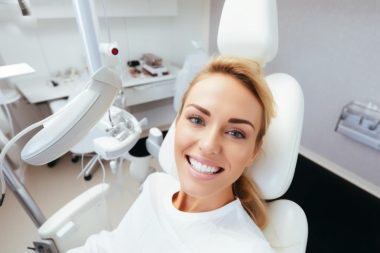Why do you need dental braces?
There are some oral conditions which can affect our health. Some of these conditions also affect how we present ourselves to society. None of us would like to introduce themselves to a weak smile. Oral health is the overall care of our mouth, teeth, breathe, and tongue. One oral condition which can affect our appearance is Hyperdontia. It is a condition where a person has an extra number of teeth.
As we all know, there are 32 permanent teeth, while the number of primary teeth is 20. Primary teeth develop within two and a half years of birth. It sheds by the age of 12 years. Then the permanent teeth come, which fully grow when a person reaches the age of 21. The condition where a person develops more than 20 or 32 teeth is called Hyperdontia. The extra or additional teeth are called supernumerary teeth.
Why are dental braces essential?
Dental braces are used for aligning the teeth. These are devices which help in putting all the teeth in the same line. Alternatively, it also helps in developing the alignment between the upper case and the lower case of our teeth. If you want to align your teeth, you can opt for Pediatric Dentistry & Orthodontics to get the braces done. Orthodontics is the treatment and study of malocclusion or improper bites. It is both functional and cosmetic development of misaligned teeth.
Braces are devices which are attached to the teeth. A metal wire connects it with brackets. These brackets are placed on each tooth. Next, the metal wire is tightened to a level where it pushes the teeth to align in a straight line. On the contrary, to move the teeth, facial bone and jaws, devices like headgear are used. Orthodontics is the overall treatment of these conditions, but it primarily focuses on teeth only.
Who can use braces?
Anyone can use braces as it is for people of all age groups. However, there is an optimal time to start the treatment, though. Nowadays, children are tested with orthodontic procedures to determine future conditions. By the age of 7 to 9, children are treated with orthodontic procedures. It determines whether they need any future orthodontic help. Early detection optimizes the chances of future oral conditions. As a child’s body is still developing, it is easy to carry out dental procedures.
There are two primary phases of orthodontic treatment. Firstly, it addresses the biting condition and supernumerary teeth issues. For instance, a person has an extra tooth in the upper jawline. He can use a jaw expander to widen the lower jawline. These jaw expanders are called palatal expander. They help the other tooth to fit in and align with the upper and lower jaw lines.
Jawline widening therapy only works in children. For adults, after the age of 21, it is not possible as the growth years are over. This is a part of phase one treatment. Braces can be placed or not depending on the dental condition of the patient. Secondly, step two is entirely a resting period. It allows the permanent teeth to develop fully and set in proper alignment.
How do braces work?
This orthodontic treatment is a slow process of controlled pressure application on teeth. The traditional braces have a wire connected to the brackets which apply pressure on the teeth. Bone remodeling is the process of moving teeth in a biometrical method. The pressure created by braces forces the teeth to shift from its initial position. The periodontal membrane and jaw bones are affected by it. Periodontal membrane act like a socket which joins the tooth to the bone.
The pressure applied to the bone by the braces leads to the shift of the periodontal membrane. It is stretched from one side and compressed from the other. At first, it loosens the tooth from the socket. The bone on the compressed side breaks and a new one forms on the stretched side. This allows the shifting of the tooth from the initial position. For this reason, it a slow process which can take a lot of time than you thought.
Do braces hurt?
Placing the braces is a painless procedure. However, the shifting process can be painful. As it is a slow process, you might experience soreness around the jawline and teeth. This soreness continues to be there for the first ten days. It again shows up with the archwire adjustment at regular intervals. You might experience discomfort while eating or chewing. Please opt for liquid foods rather than reliable. You can also consume some OTC or over-the-counter medication for pain relief. On the other hand, orthodontic wax helps in getting used to the braces.
If you wish to have correctly aligned teeth, you should opt for orthodontic treatments at an early age. Be smart and choose well. Your oral health is your responsibility.








Reply